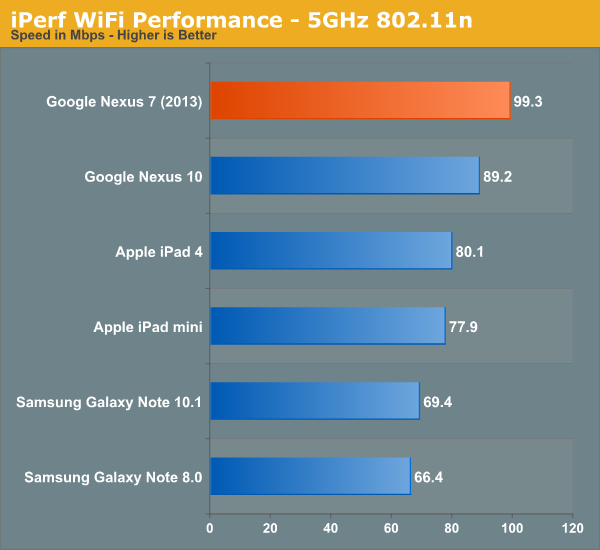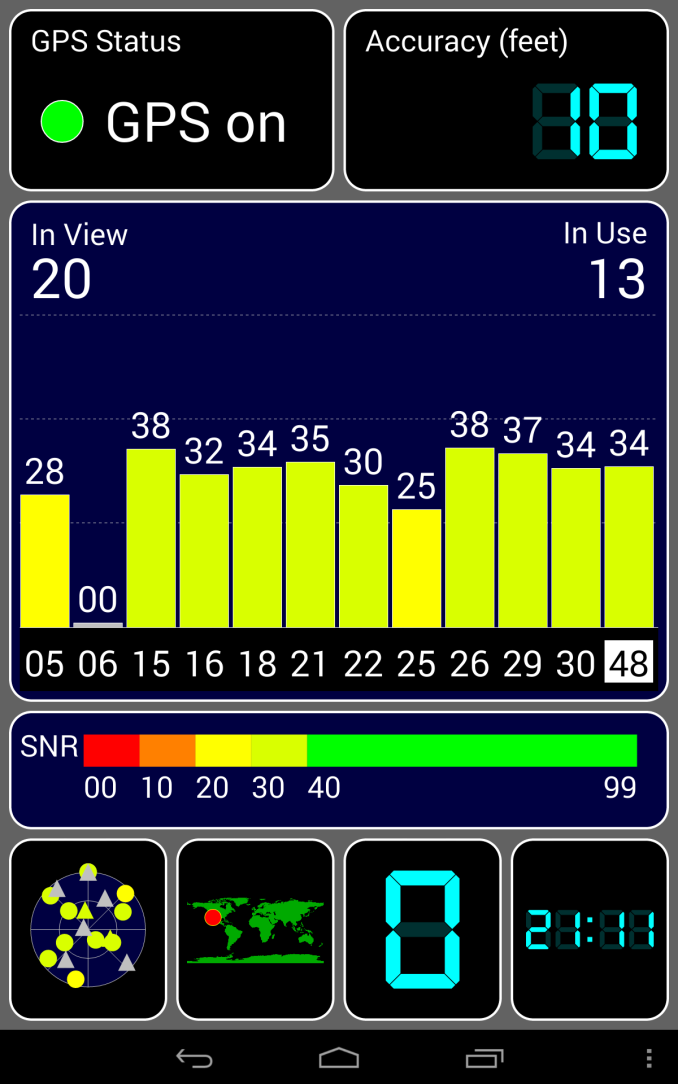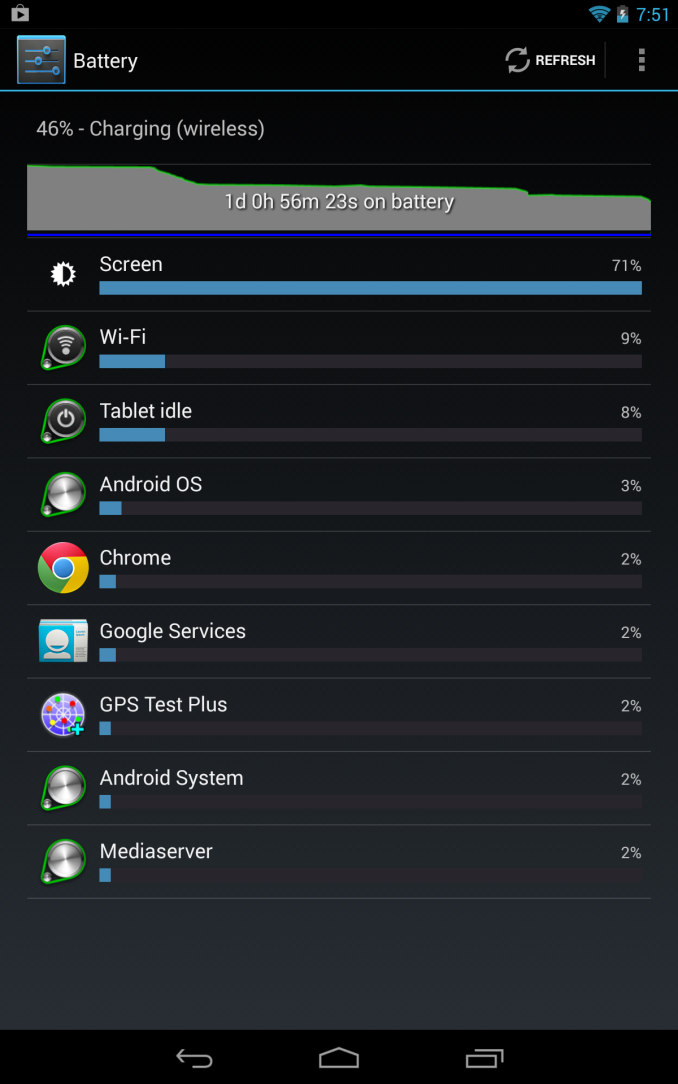Nexus 7 (2013) - Mini Review
by Brian Klug on July 27, 2013 12:54 AM EST- Posted in
- Tablets
- Snapdragon
- Qualcomm
- Android
- Mobile
- APQ8064
- Nexus 7
- Android 4.3
One of the biggest complaints I had about the original Nexus 7 was connectivity, as it only included 2.4 GHz 802.11b/g/n support. The hilarity of that situation was only compounded by the fact that Google could only demo the Nexus 7 at that Google I/O plugged in through USB-OTG Ethernet adapters because 2.4 GHz is effectively impossible to use at conferences. With the new Nexus 7, dual band (2.4 and 5 GHz) WLAN is now included with a WCN3660, Qualcomm’s companion WiFi 802.11a/b/g/n, BT 4.0, and FM Tx/Rx combo (though FM features aren’t enabled on the Nexus 7 2013).

Performance is correspondingly improved, and if you’re in an urban area where 2.4 GHz is congested beyond use, this makes the difference between an unusable brick and working tablet. Many have asked, why not WCN3680 (the 802.11ac enabled successor to 3660), the answer is of course, you’re talking about a ~$200 tablet, stuff like this understandably has to be n–1 without making the bill of materials untenable.
There’s also GNSS (GPS+GLONASS) on the WiFi only model which I tested, this goes through WCN3660 and into the baseband on APQ8064 in this configuration I believe. I’ve had nothing but great success with Qualcomm’s GNSS being the fastest out there to 3D cold fix, that holds true with the Nexus 7 (2013), even walking around the urban canyon scenario that San Francisco poses to GNSS.
Charging
The Nexus 7 (2013) is Qi (pronounced: “chee”) enabled, the de-facto wireless charging standard of the now. The Qi charger area is dead center in the middle, using a coil inside of the NFC one. That makes positioning easy.
I tossed the Nexus 7 on my Energizer Qi two-position mat when I got home, and it works perfectly, of course Qi can only charge at up to 5 watts. The in-box supplied charger is a 1.35 A variant, which isn’t anything special. Connected to my special linear power supply and battery charge downstream port controller which negotiates the proper standard, I saw the Nexus 7 (2013) draw a max of 1.32 A (6.6 watts), which makes sense given the supplied charger. I don’t have a 0–100 percent charge time number yet.












252 Comments
View All Comments
prince2013 - Saturday, July 27, 2013 - link
what is your basis that the LTE model doesn't include a Qualcomm RF360 chip? How else could it work with all US carriers?Brian Klug - Saturday, July 27, 2013 - link
RF360 isn't a chip at all, for some reason I see this all over the place. Rather it's a portfolio of front end components from Qualcomm with a stacked PoP (RF this time) architecture. The core of the RF360 family is a CMOS Power Amplifier and switch, the rest of it is just packaging. For reasons I've discussed, MDM9x15 family doesn't need "RF360" family font ends (of which there's only one compatible, it's primarily going to start with MDM9x25) to do Band 13 and 17 coexistence, just the right discrete PAs and filters, and there's plenty of space for that in a tablet.-Brian
nofumble62 - Saturday, July 27, 2013 - link
I don't see any compelling reason to upgrade my current Nexus 7 though.Dribble - Saturday, July 27, 2013 - link
Current N7 is still working fine, will skip thing gen and get V3 next year.easp - Saturday, July 27, 2013 - link
Is there a discussion of battery life I missed, or is that not relevant for mobile devices any more?Death666Angel - Saturday, July 27, 2013 - link
You've missed the headline, where it says "mini". He didn't have time to do the battery life tests, which take up most of such a review, as a single charge takes 2 to 4 hours and discharging them takes 5 to 10 hours most of the time.Brian Klug - Saturday, July 27, 2013 - link
Battery life testing is ongoing at present, Anand is running those as I write this.-Brian
EnzoFX - Saturday, July 27, 2013 - link
This may have been brought out by the tests, but is the display panel wide gamut? Or at least as much as the iPad 3/4 are?Vigneshj - Saturday, July 27, 2013 - link
//dismayed why more OEMs don’t use the full encode capabilities of APQ8064 (20 Mbps H.264 High Profile) but that’s what it is by default on the new Nexus 7//Can any third party android app helps to overcome this?
Brian Klug - Saturday, July 27, 2013 - link
Yeah or editing build.prop after you've rooted it to change settings.-Brian